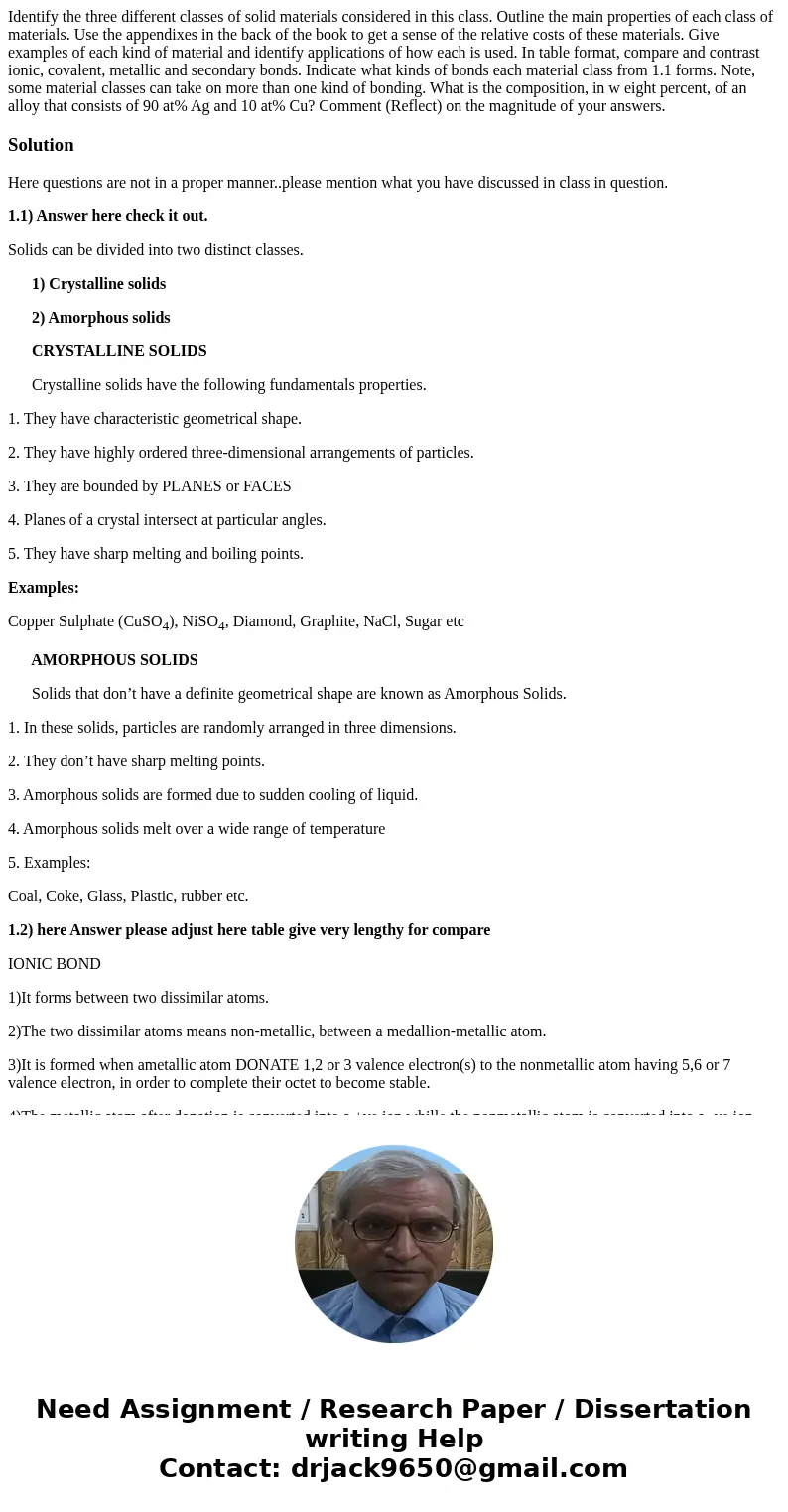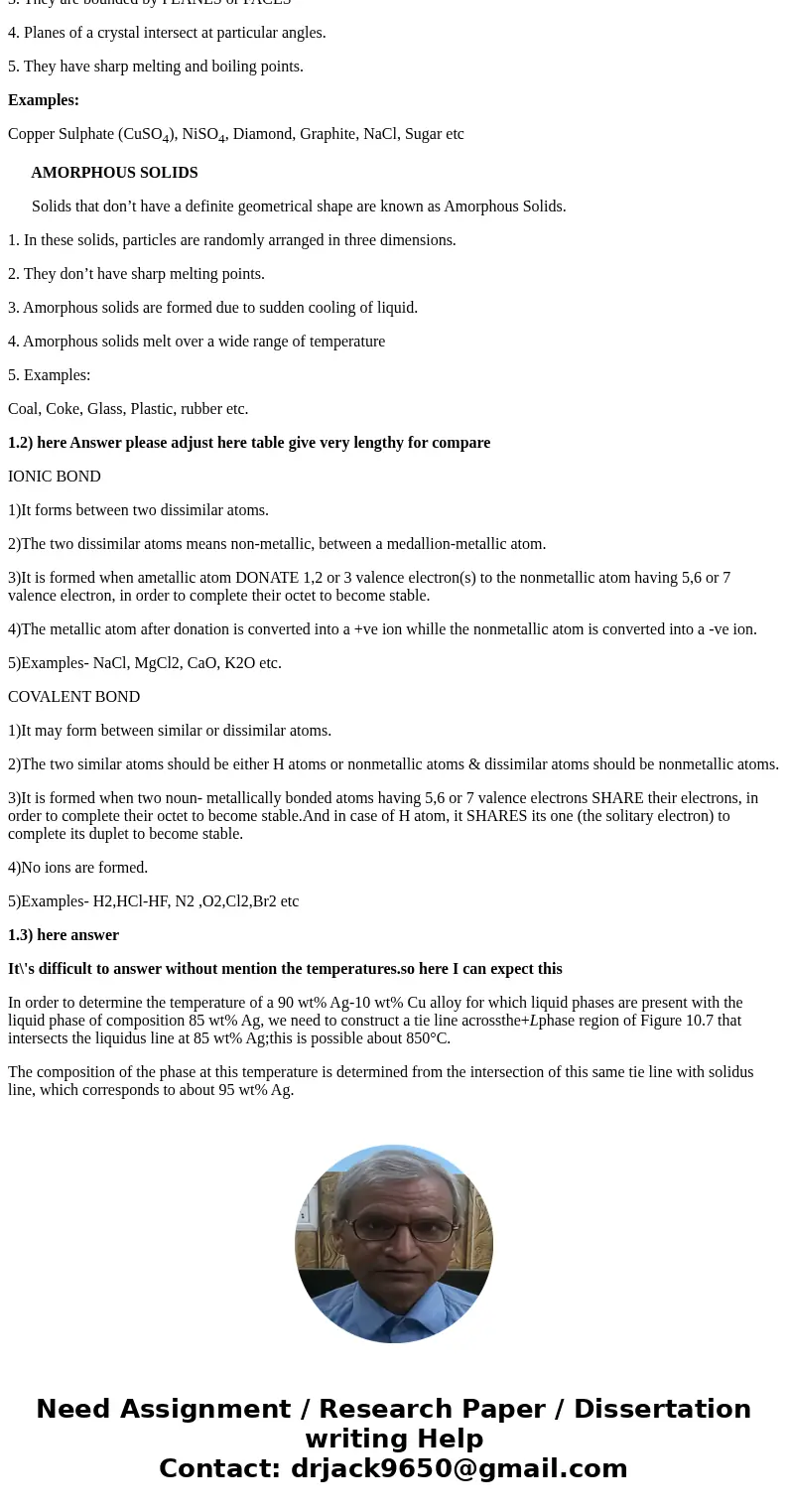Identify the three different classes of solid materials cons
Solution
Here questions are not in a proper manner..please mention what you have discussed in class in question.
1.1) Answer here check it out.
Solids can be divided into two distinct classes.
1) Crystalline solids
2) Amorphous solids
CRYSTALLINE SOLIDS
Crystalline solids have the following fundamentals properties.
1. They have characteristic geometrical shape.
2. They have highly ordered three-dimensional arrangements of particles.
3. They are bounded by PLANES or FACES
4. Planes of a crystal intersect at particular angles.
5. They have sharp melting and boiling points.
Examples:
Copper Sulphate (CuSO4), NiSO4, Diamond, Graphite, NaCl, Sugar etc
AMORPHOUS SOLIDS
Solids that don’t have a definite geometrical shape are known as Amorphous Solids.
1. In these solids, particles are randomly arranged in three dimensions.
2. They don’t have sharp melting points.
3. Amorphous solids are formed due to sudden cooling of liquid.
4. Amorphous solids melt over a wide range of temperature
5. Examples:
Coal, Coke, Glass, Plastic, rubber etc.
1.2) here Answer please adjust here table give very lengthy for compare
IONIC BOND
1)It forms between two dissimilar atoms.
2)The two dissimilar atoms means non-metallic, between a medallion-metallic atom.
3)It is formed when ametallic atom DONATE 1,2 or 3 valence electron(s) to the nonmetallic atom having 5,6 or 7 valence electron, in order to complete their octet to become stable.
4)The metallic atom after donation is converted into a +ve ion whille the nonmetallic atom is converted into a -ve ion.
5)Examples- NaCl, MgCl2, CaO, K2O etc.
COVALENT BOND
1)It may form between similar or dissimilar atoms.
2)The two similar atoms should be either H atoms or nonmetallic atoms & dissimilar atoms should be nonmetallic atoms.
3)It is formed when two noun- metallically bonded atoms having 5,6 or 7 valence electrons SHARE their electrons, in order to complete their octet to become stable.And in case of H atom, it SHARES its one (the solitary electron) to complete its duplet to become stable.
4)No ions are formed.
5)Examples- H2,HCl-HF, N2 ,O2,Cl2,Br2 etc
1.3) here answer
It\'s difficult to answer without mention the temperatures.so here I can expect this
In order to determine the temperature of a 90 wt% Ag-10 wt% Cu alloy for which liquid phases are present with the liquid phase of composition 85 wt% Ag, we need to construct a tie line acrossthe+Lphase region of Figure 10.7 that intersects the liquidus line at 85 wt% Ag;this is possible about 850°C.
The composition of the phase at this temperature is determined from the intersection of this same tie line with solidus line, which corresponds to about 95 wt% Ag.


 Homework Sourse
Homework Sourse